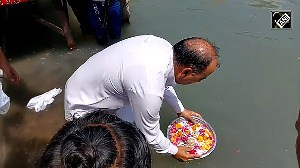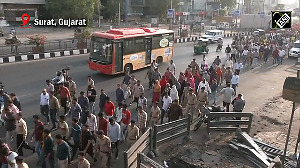The South Asian Free Trade Agreement, replacing the South Asian Preferential Trade Agreement, has come into effect this month, and implements the understanding reached at the Islamabad Summit in 2004.
However, Pakistan is yet to ratify the agreement and so we have the perverse situation of a free trade agreement having come into force without one of the countries in the grouping granting another most favoured nation status.
Safta has a special character because three countries (India, Pakistan, Sri Lanka) are developing (DCs), while the other four (Bangladesh, the Maldives, Nepal, and Bhutan) are least developed countries (LDCs).
Indeed, because of preferences, the international trading system has a perverse incentive against countries graduating out of LDC status, a point relevant for Bangladesh and perhaps even the Maldives.
Safta DCs will reduce customs duties to 0-5 per cent by 2013 and LDCs will do it by 2018. In addition, DCs will have an early harvest programme (by 2009) of duty reduction for imports from LDCs.
That intra-Saarc trade is low (around 5 per cent of the region's total trade) is obvious, although it has increased since 1985, when Saarc was formally established.
However, in considering such overall figures, it must be remembered that some of the smaller countries (Nepal, Bhutan) have substantial intra-bloc trade.
The problem is with the larger countries, especially India and Pakistan. Some of the problem is created by poor data capture, because there is a significant level of "informal" and third country trade between India and countries like Pakistan, Bangladesh and Sri Lanka.
Even if some of this trade were to be formalised and brought into the official data, as seems to have happened with Sri Lanka, the target of doubling intra-Saarc trade will be achieved.
India has a plethora of FTAs (free trade agreements) now, and it is not obvious how Safta fits into other liberalisation plans.
The Bay of Bengal initiative and bilateral agreements with Nepal, Bangladesh, and Sri Lanka, and even Asean spring to mind, with some talk of China and Japan becoming observers in Saarc.
As things stand, Safta is restricted to trade in manufactures, with further caveats arising from sensitive lists (India has 884 items for DCs, and 765 for LDCs) and rules of origin requirements (changes in tariff heading at 4-digit level, and value addition of 40 per cent for DCs, and 30 per cent for LDCs). Bilateral agreements with Sri Lanka, Bangladesh and Nepal have shown that these can result in non-tariff barriers that defeat the purpose of liberalisation.
Co-operation in trade facilitation and testing and certification of standards can probably do more for the cause of boosting trade than ratification of Safta.
One should also remember that, at least for India, unilateral (if not multilateral) liberalisation should drive manufacturing tariffs down to near the 5 per cent mark by 2013.
If trade is the focus, there is a case for India fast-tracking such liberalisation unilaterally, independent of Safta. That in turn would mean that Safta is not a very important initiative, for intra-regional trade would grow regardless.
This would also yield relatively large gains to the smaller countries. As the Sri Lanka experiment is beginning to demonstrate, this addresses India's security concerns and creates pro-Indian vested interests.
That apart, it facilitates exploitation of dynamic welfare gains that transcend trade in manufactured products alone. Cross-border movements of labour and capital are where the meat is, and since the Kathmandu Summit in 2002, an economic union has been talked about.
Safta is only a very limited step in that direction.







 © 2025
© 2025